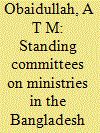|
|
|
Sort Order |
|
|
|
Items / Page
|
|
|
|
|
|
|
| Srl | Item |
| 1 |
ID:
149007


|
|
|
|
|
| Summary/Abstract |
With an exponential growth in smartphone applications targeting useful services such as banks, healthcare, m-commerce, security has become a primary concern. The applications downloaded from unofficial sources pose a security threat as they lack mechanisms for validation of the applications. The malware infected applications may lead to several threats such as leaking user’s private information, enforcing malicious deductions for sending premium SMS, getting root privilege of the android system and so on. Existing anti-viruses depend on signature databases that need to be updated from time to time and are unable to detect zero-day malware. The Android Operating system allows inter-application communication through the use of component reuse by using intents. Unfortunately, message passing is also an application attack surface. A hybrid method for android malware detection by analysing the permissions and intent-filters of the manifest files of the applications is presented. A malware detection framework is developed based on machine learning algorithms and on the basis of the decision tree obtained from ID3 and J48 classifiers available in WEKA. Both algorithms gave same results with an error percentage of 6 per cent. The system improves detection of zero day malware.
|
|
|
|
|
|
|
|
|
|
|
|
|
|
|
|
| 2 |
ID:
191295


|
|
|
|
|
| Summary/Abstract |
Energy Performance Certificates (EPCs) are designed to provide consistent and comparable energy efficiency ratings. Since 2008, any building constructed, rented or sold is required to obtain an EPC in the UK. 4% of simple office buildings have renewed their EPC to date in England and Wales. In this paper, by comparing the original and renewed EPCs of these buildings, we examine the reliability of non-domestic EPC ratings and discover realistic energy efficiency improvement strategies reflected in the changes. We have found that buildings with their conditions remaining unchanged can be better rated by approximately 10 points on average when their initial rating is above the minimum requirement in the regulation. The ones initially rated below the minimum requirement are expected to have a greater scale of improvement on ratings while making no efforts which brings doubts on the effect of the “Minimum Energy Efficiency Standard” policy. Evidenced human factors are also jeopardising the fairness of EPC ratings. Based on the changes in the EPCs, we have found 4 clusters of improved buildings and 5 clusters of deteriorated buildings. We derived practical energy efficiency improvement strategies that people have already naturally adopted.
|
|
|
|
|
|
|
|
|
|
|
|
|
|
|
|
| 3 |
ID:
137701


|
|
|
|
|
| Summary/Abstract |
The empirical literature indicates that momentum-style investing is a more effective approach than value-based or growth-based strategies. To confirm this, this article makes an attempt to construct a Momentum Index for the Indian equity market. The CNX NIFTY 50 Momentum Index is designed by calculating the volatility and volume-adjusted Momentum Index for each security in the CNX NIFTY 50 Parent Index. The estimated Momentum Index returns are compared with the CNX NIFTY 50 Index in terms of volatility, Sharpe Ratio and Treynor Ratio. Using VAR methodology, and macroeconomic, firm-specific factors which influence the momentum, index returns are analysed. This study also examined the Fama–French unconditional CAPM by including the Momentum Index return as the fourth factor alongside price–earnings, price–book ratio and dividend yield in estimating excess market returns.
JEL: G11, G12, G14
|
|
|
|
|
|
|
|
|
|
|
|
|
|
|
|
| 4 |
ID:
127686


|
|
|
|
|
| Publication |
2011.
|
| Summary/Abstract |
Since parliamentary democracy in Bangladesh was restored in 1991, the reorganisation of parliament has become the centre of attention. Development partners have been keen on organisational and institutional reforms in parliament to make a meaningful shift to the parliamentary system that was put in place abruptly and without adequate preparations. This transformation called for a revision of rules and the modernisation of the parliamentary secretariat, rejuvenating the committee system. This article highlights the major steps taken in the reorganisation of the standing committees of the parliament in Bangladesh, in an attempt to increase the parliament's institutional/oversight capacity on the executive. It traces the weaknesses of the parliamentary standing committees of the early 1990s, findings and recommendations of the major reform measures and the state of affairs in the aftermath of reforms. However, strengthening parliamentary committees and their oversight capacity on the executive needs systemic and institutional changes, which calls for strong political commitment and strategic leadership on the part of senior parliament management and change in the mindset of the executive.
|
|
|
|
|
|
|
|
|
|
|
|
|
|
|
|
| 5 |
ID:
192719


|
|
|
|
|
| Summary/Abstract |
Marine renewables – which include mainly wave, tidal and current energy – have been hailed, for the past decades, as a potential solution to support the decarbonization of the society. Portugal and Spain have been traditionally avid for the testing and demonstration of such technologies, but the implementation of marine capacity is yet marginal, and there are many uncertainties regarding the future of the sector in the region. The main objective of this article is to show a future projection of marine renewable energies in both Iberian and Macaronesian regions for 2030 to research and technological development communities. To obtain this future projection, General Morphological Analysis and advanced clustering techniques have been used. The results are divided into five groups of potential scenarios, which vary significantly due to different political, social and technological parameters. The influence of variables such as innovation speed, infrastructure implementation, and comprehensive metocean data availability emerges as pivotal determinants shaping the sector's course. The knowledge from this systematization is expected to be used by researchers, technicians, governments or by any other agency involved in marine renewable energies in Spain and Portugal, as a guidance for their new projects and research lines.
|
|
|
|
|
|
|
|
|
|
|
|
|
|
|
|
|
|
|
|
|